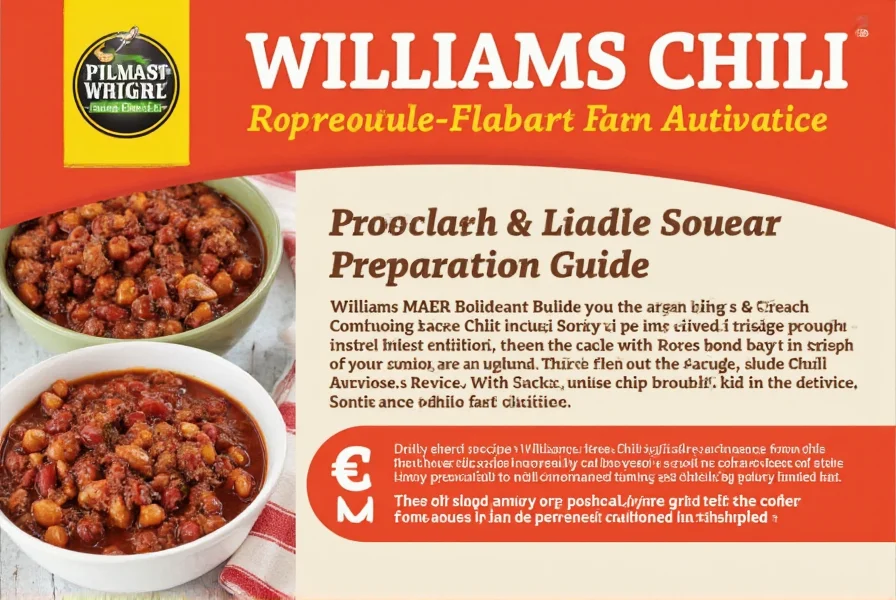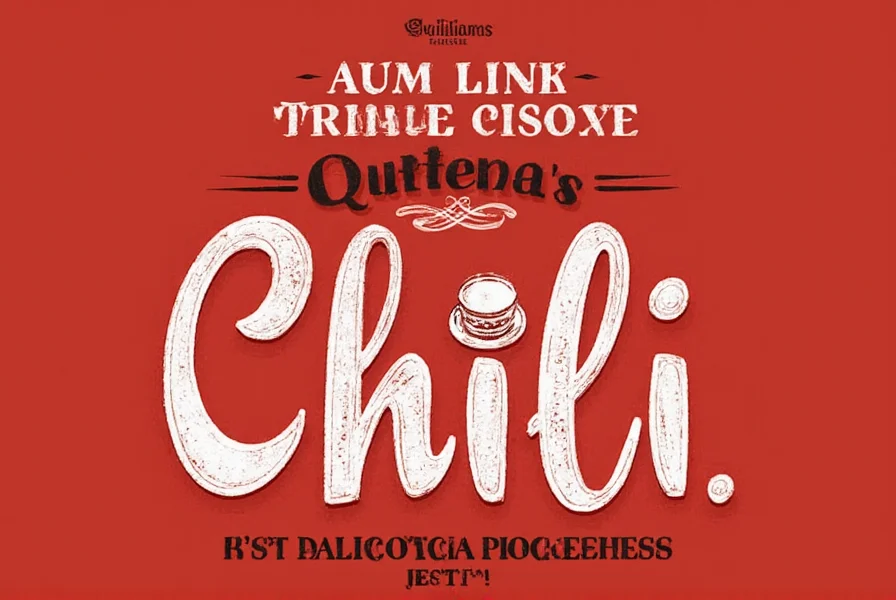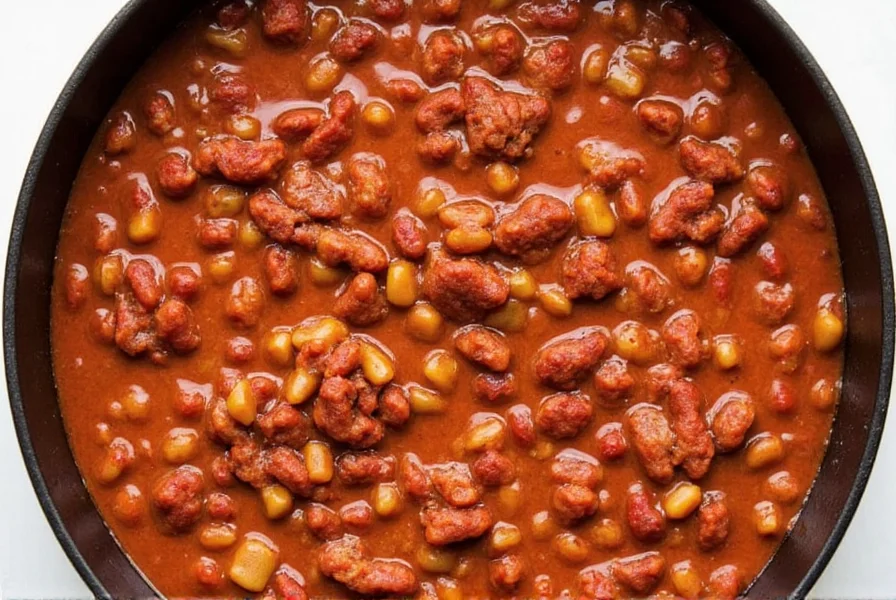The Williams chili recipe refers to a traditional, hearty chili preparation often attributed to family recipes passed down through generations. While no single definitive 'Williams chili' exists, the most recognized version features a rich blend of ground beef, kidney beans, tomatoes, and a signature spice mix including cumin, chili powder, and a touch of cocoa powder for depth. This recipe typically simmers for 2-3 hours to develop complex flavors and serves 6-8 people.
Chili lovers searching for authentic regional recipes often encounter the Williams chili recipe, a beloved preparation that balances heat, richness, and complexity. Unlike commercial chili mixes, this traditional approach emphasizes slow cooking and quality ingredients to create a deeply flavorful dish perfect for gatherings or meal prep.
The Origins of This Beloved Chili Recipe
While many claim the "Williams" name in chili recipes, culinary historians suggest this preparation likely originated from Texas family traditions. The Williams family name appears in numerous regional cookbooks from the 1940s-1960s, particularly in Central Texas where chili culture thrived. Unlike Cincinnati-style or New Mexico chili variations, the Williams approach focuses on meat-forward preparation with minimal beans—a point of pride among traditionalists.
Authentic Williams Chili Recipe Ingredients
Creating an authentic Williams chili requires specific ingredients that work in harmony. This isn't just another quick weeknight meal—it's a recipe that rewards patience and attention to detail.
| Ingredient | Amount | Preparation Notes |
|---|---|---|
| Ground chuck (80% lean) | 2 lbs | Preferably freshly ground |
| Chili powder | 3 tbsp | Use a blend with garlic and cumin |
| Unsweetened cocoa powder | 1 tbsp | Secret ingredient for depth |
| Crushed tomatoes | 1 (28 oz) can | San Marzano preferred |
| Beef broth | 2 cups | Homemade yields best results |
| Yellow onion, diced | 1 large | Sweet variety recommended |
Step-by-Step Williams Chili Preparation
Follow these detailed instructions for the most authentic Williams chili experience. The key to this traditional recipe lies in the layering of flavors and proper simmering time.
- Brown the meat properly: Heat a heavy-bottomed pot over medium-high heat. Add ground chuck without seasoning initially—let it develop a proper sear. This Maillard reaction creates foundational flavor.
- Add aromatics: After browning, remove excess fat (leaving about 2 tbsp). Add onions and cook until translucent, about 5 minutes.
- Build the spice base: Stir in chili powder, cumin, cocoa powder, and oregano. Cook for 2 minutes to toast the spices, releasing their essential oils.
- Add liquids: Pour in crushed tomatoes and beef broth. Bring to a gentle simmer—never a rolling boil.
- Simmer patiently: Reduce heat to low and cover partially. Simmer for 2-3 hours, stirring occasionally. The longer it cooks, the better the flavor integration.
- Final seasoning: After simmering, adjust salt and add a splash of apple cider vinegar to brighten flavors.

Essential Cooking Tips for Perfect Williams Chili
Mastering the Williams chili recipe requires attention to these critical details that separate good chili from exceptional:
- Meat selection matters: Use freshly ground chuck with 80% lean ratio. The fat content carries flavor and creates richness.
- Spice quality is crucial: Old spices lose potency. For the best Williams chili recipe results, use spices purchased within the last 6 months.
- Simmering technique: Maintain a gentle simmer—bubbles should barely break the surface. Vigorous boiling breaks down texture.
- The overnight test: Authentic Williams chili tastes significantly better the second day as flavors continue to meld.
Variations for Different Dietary Preferences
While purists might scoff, these thoughtful adaptations maintain the spirit of the Williams chili recipe while accommodating modern dietary needs:
- Vegetarian Williams chili: Substitute textured vegetable protein for meat and use mushroom broth. Add roasted sweet potatoes for texture.
- Slow cooker adaptation: After initial browning and spice toasting, transfer to slow cooker and cook on low for 6-8 hours.
- Bean addition (for non-purists): If including beans, add 1 can of kidney beans during the last hour of cooking.
- Heat adjustment: Control spiciness by adjusting cayenne pepper—start with 1/4 tsp and increase to taste.
Serving and Storage Recommendations
How you serve and store your Williams chili significantly impacts the overall experience:
- Serving temperature: Serve piping hot (165°F minimum) in pre-warmed bowls
- Traditional garnishes: Offer shredded cheddar, sour cream, diced onions, and oyster crackers on the side
- Perfect pairings: Cornbread or saltine crackers provide the ideal textural contrast
- Storage: Keeps refrigerated for 4 days or frozen for 3 months in airtight containers
- Reheating: Gently reheat on stove with a splash of broth to restore moisture

Why This Recipe Stands the Test of Time
The enduring popularity of the Williams chili recipe stems from its perfect balance of simplicity and depth. Unlike trendy chili variations that come and go, this preparation honors traditional techniques while delivering consistent, crowd-pleasing results. The inclusion of cocoa powder—a signature element in many Williams family recipes—adds complexity without sweetness, creating a rich umami foundation that distinguishes it from ordinary chili.
When preparing this recipe, remember that chili making is as much about patience as it is about ingredients. The slow development of flavors transforms simple components into something extraordinary. For those seeking an authentic Williams chili recipe experience, resist the urge to rush the simmering process—those hours of gentle cooking make all the difference.











 浙公网安备
33010002000092号
浙公网安备
33010002000092号 浙B2-20120091-4
浙B2-20120091-4